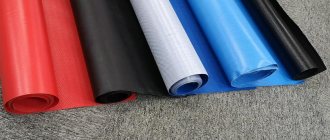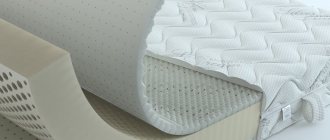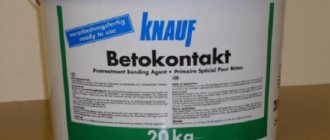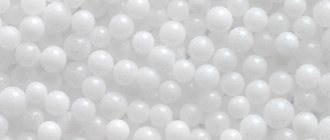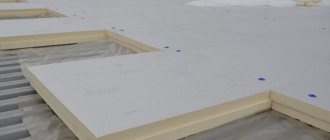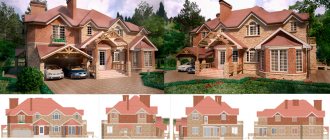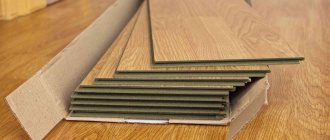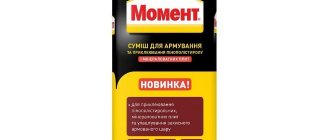It can be difficult to keep up with the building materials market - fundamentally new developments are constantly being added and existing ones are being improved.
Polystyrene foam has always been considered one of the best thermal insulators, but its properties have been significantly improved.
We are talking about EPS material (other names are EPPS, XPS, Penoplex, Polpan, Extruded or Extruded polystyrene foam). Technical characteristics, scope of application, advantages and disadvantages and prices - everything is in our article.
Production technology and composition
The chemical composition of the material is similar to polystyrene foam. Its main component is polystyrene foam granules. They are mixed with fire retardants, which reduce flammability, and substances that increase the strength and improve the characteristics of polystyrene foam, and then melted at elevated temperatures. After obtaining a homogeneous molten mass, a foaming agent, carbon dioxide, is introduced into it under high pressure.
After this, the material goes through an extrusion process. The resulting hot mass is forced through the rectangular hole of the extruder. As the pressure drops to normal levels, carbon dioxide expands and foams the mass. Using the size of the extruder hole, the thickness and width of the resulting strip are adjusted. The XPS strip is sawn into slabs of specified dimensions.
The use of extruded polystyrene foam complies with the requirements of SNiP 21-01-97 “Fire safety of buildings and structures”. Federal Law No. 123 regulates the toxicity of combustion products. High-quality EPS has a T2 rating and is classified as a moderately dangerous insulation material. Wood materials, such as parquet, have the same indicator. Production, testing methods, labeling of extruded polystyrene foam are regulated by the requirements of GOST 32310-2012 .
Scope of application of EPPS
Let us consider in more detail the possible areas of use of polystyrene foam boards. Operational and mechanical characteristics allow the active use of polystyrene foam for:
- Thermal insulation of private households and ASG facilities;
- Protection against freezing of the cushions of highways, main pipelines, runways;
- Thermal insulation of foundations, retaining structures and roofs;
- Production of household and industrial refrigeration units, refrigerators;
- Installation of various types of hydraulic barriers;
- Production of packaging and disposable tableware;
- Making household items.
Despite the fact that the scope of use of extruded panels is quite extensive, there are some limitations.
Marking
Foamed polystyrene foam is marked according to GOST and European standards.
According to GOST, the marking must contain the following data:
- Product name
- Manufacturer's name or trademark and address
- Work shift, date of manufacture, workshop of the manufacturer
- Fire safety class
- Thermal resistance
- Thermal conductivity
- Nominal thickness
- Marking code
- Type of cladding or covering, if any
- Length and width
- Number of products in the package and their total area, if necessary
European standards for marking XPS are outlined in document EN 13164:2001 . However, different manufacturers have their own designations for the main characteristics. For example, material under the Penoplex brand has the following markings:
- Type indication – 30, 35, 45
- Designation of grooved surface
- Specifying the selected quarter
- Slab thickness in mm
This marking looks like this: 35GS-30.
Application of THERMIT XPS 35
THERMIT insulation is a high-quality thermal insulation material that has one of the lowest thermal conductivity coefficients among insulation materials widely used in construction. The high strength, rigidity and durability of THERMIT 35 slabs allow them to be used for insulating underground parts of buildings, ground floors, flat roofs, foundations for highways and railway embankments.
THERMIT 35 is an ideal product for applications where operating conditions are extreme - high humidity, high loads, direct contact with the ground.
The material is produced using environmentally friendly foaming technology. Thus, THERMIT and its production technology are safe for humans and the environment.
Release form
XPS is produced in the form of slabs, substrates and decorative elements.
The slabs have dimensions of 600x1200 and 600x2400 mm. Some manufacturers produce slabs with a width of 600 and 580 mm. Their thickness ranges from 20 to 100 mm. They are supplied to stores in packages. The number of slabs in a package varies and depends on their thickness. Thus, 50 mm thick EPS is sold in packs of 8 pieces, 100 mm thick - 4 pieces.
In addition to slabs, the material is produced in the form of a base for flooring. There is a substrate for parquet, laminate and linoleum. Also, various decorative elements that are made from gypsum can be made from expanded polystyrene. At the same time, the appearance of the products is practically no different from plaster.
What is special about penoplex M35?
Thermal insulation boards called Penoplex 35 with Penoplex glue in modern construction are most often used in thermal insulation of foundations, walls, floors, roofs, as well as pipelines of buildings. This material is also multifunctional.
Penoplex 35 is a unique new generation of insulation that can be used during the construction of almost any structure for various purposes.
House insulated with M35 penoplex
Let's look at its properties in more detail.
Extruded polystyrene foam: characteristics
- Strength is in the range of 2-3.6 kgf/sq. cm at 10% linear deformation and 4-7.1 kgf/sq. cm for static bending. The strength of EPS directly depends on its thickness and density.
- Volumetric weight – 15-29 kg/cubic. m and 30-36 kg/cu.m. m. The first is used for insulating houses and industrial buildings and is attached to unloaded structures - walls, ceilings, interfloor ceilings. The second is used to insulate the foundation, floor, roof and other horizontal and inclined surfaces.
- shrinkage of the material under any operating conditions.
- Thermal conductivity is 0.026 W/mG at an average temperature of 10 C. As insulation, polystyrene foam is noticeably superior to other materials. For example, 50 mm thick foam insulation will be equivalent to 20-30 mm EPS.
- Frost resistance . The material loses only 5% of its thermal resistance after 1000 freeze-thaw cycles. The temperature range in which it does not change the physical and thermal parameters is from -50 to +75 C.
- Water absorption is not higher than 0.5% of the volume for 30 days. Low moisture absorption is due to the low capillarity of the material. This allows it to be used in conditions of high humidity and for insulating basements, foundations and roofs. Water absorption occurs only on the surface due to the fact that there are destroyed cells there.
- Vapor permeability depends on the thickness and density of the EPS. Plates with a thickness of 20 mm have a vapor permeability equivalent to one layer of roofing felt. Penoplex brand expanded polystyrene has a vapor permeability coefficient of 0.007-0.012 mg/(m•h•Pa).
- fire resistance class of conventional EPPS is G3-G4. The addition of fire retardants raises the class to G1. The material is not completely non-flammable, but has sufficient fire resistance for use in the construction of buildings and structures.
- The cost of the material is calculated per square meter or cubic meter. Depending on the manufacturer and brand, it ranges from 55-80 rubles/sq. m. or from 3800 rub./cub. m.
- Soundproofing . Impact noise reduction index – 25 dB. XPS refers to materials used for impact noise insulation.
- Environmental friendliness . The insulation is classified as moderately hazardous and has a toxicity class of T2. Not susceptible to decomposition in the environment, the appearance of fungi and mold.
- The service life of extruded polystyrene foam is comparable to the service life of a building. High-quality material lasts more than 40 years, subject to compliance with installation technology.
Myths and realities
1. Firstly, the statement that EPS boards are short-lived does not stand up to criticism. As a result of official laboratory studies, it was found that they can withstand temperature changes with an amplitude of 40 degrees. Extruded polystyrene foam only does not like direct ultraviolet rays, so you need to cover the entire structure with materials that protect its surface well.
2. The second myth is that styrene, which is used in the production of XPS, is a very harmful component. But in fact, this colorless liquid has a second class of harmfulness and is on par with the detergents and washing powders that we use every day.
There is no release of toxic components during the combustion of EPS, since it consists of 95% air. Even after fifty years of operation, traces of styrene decomposition cannot be detected in the slabs.
3. And finally, the third myth is about the high flammability of EPS. We have already written that extruded polystyrene foam does not ignite from a cigarette butt or match. In every apartment there are many other items that are ready to burst into flames even from a small fire source: plastic, carpets, furniture, household appliances, etc. Of course, if the fire has already spread to the walls, then the EPS will also begin to burn. But only as a last resort. After all, its ignition temperature is almost 500°C. For comparison, the combustion temperature of regular cotton is 253°C.
In addition, EPS in most designs is covered on top with other materials. It is practically impossible for a spark to hit its surface.
Advantages and disadvantages
Advantages of extruded polystyrene foam over analogues:
- Very low moisture absorption
- Durability
- Ease of use and installation
- High thermal insulation capacity
- Strength and ability not to lose shape and volume under different operating conditions
Along with its advantages, it has some disadvantages. Among these is a low level of vapor permeability. As insulation, it is not suitable for all types of premises. If you insulate a residential building with it, it will turn into a thermos that cannot breathe. Another disadvantage is the cost, which is higher than other insulation materials. Although the technical characteristics and price of extruded polystyrene foam are adequate to each other. Finally, the sound absorption of XPS in practice is quite low.
How to choose the right polystyrene foam
We have talked enough about the pros and cons, the strong and weak properties of EPP. The time has come to decide what we should devote our time to when purchasing material and what to pay attention to. A good seller praises his product, feeling the desire to sell it quickly. Our task is to buy extruded polystyrene foam of the best quality.
The best solution would be to purchase goods from well-known, reputable suppliers offering equally well-known manufacturer brands. Foreign brands such as Basf or Novachemicals will meet all your expectations. Of the Russian companies, in fairness, it is worth noting that the quality of their products is no worse than that of imported ones, we recommend paying attention to the Penoplex brands URSA, Knauf and Technonikol.
If the above brands are not available on the market, carefully study the technical instructions. The EPP designation begins with two numbers. Refuse to purchase if the marking value is less than index 28; such a polymer is not suitable for construction and insulation work. It is not beneficial for the seller to mention this, and most likely he will modestly keep silent about it. For facade work on thermal insulation, the PSB-S-40 brand is ideal; in addition, it is a self-extinguishing material.
A quick quality check can be done by breaking a small piece of polystyrene foam. A smooth fault indicates that you are facing an EPP. Otherwise, if the break line is uneven and there are many small balls, then most likely you have ordinary foam plastic in your hands, which is only suitable for packaging household utensils.
You need to understand that manufacturing EPP is a complex process, and different manufacturers do it using different technologies. Some of them are completely safe for health, others cause irreparable harm to humans.
When choosing extruded polystyrene foam, look at large companies that have long established themselves as reliable manufacturers. In this case, we can speak with confidence about an undoubtedly high-quality product. Unknown brands with big names may be initially more profitable, but the risks associated with subsequent alterations will cost you much more!
Remember that the poor quality of polystyrene foam will not only not serve as a good heat insulator, but will also have a negative impact on the health of your loved ones.
Popular polystyrene foam manufacturers
The building materials market boasts expanded polystyrene from a variety of manufacturers, both foreign and domestic. Let's get acquainted with the most popular brands.
• Europlex . This company is a leader in the production of thermal insulation for the construction industry. Among Europlex products you can find both stepped and corrugated slabs with a wide variety of physical properties that can satisfy the requirements of the most demanding customer.
• "URSA XPS" . The material from this company is characterized by increased strength, which makes it indispensable for professional construction. If you need polystyrene foam for floor insulation that can withstand increased loads, slabs from URSA are your best choice!
• "Penoplex". This is the largest Russian manufacturer of expanded polystyrene, which produces insulation for both private and industrial buildings, as well as for various utilities. Manufacturers can boast of a variety of forms and types of polystyrene foam at affordable prices, which distinguishes this company from many other manufacturers.
• Stirex. Another Russian manufacturer producing panels for both civil and industrial construction. Styrex cannot boast such a wide range of products as Europlex, but this company produces panels for aviation and road construction. In addition, the company in question pleasantly surprises with its prices.
As you can see, extruded polystyrene foam is a universal material that can become a reliable protection for your home from cold, excess noise and other troubles. With such insulation, installed in compliance with the technology, your home will forget about all the problems for decades!
Polyurethane foam: types, properties, application
Ecowool - properties, application methods, manufacturers
Differences between XPS and EPS polystyrene foam
There are 2 types of expanded polystyrene: extruded (XPS, eXtruded PoliStyrene) and foamed (EPS, Expanded PolyStyrene). In terms of chemical properties and thermal conductivity, the materials are very similar to each other, but some of their properties are fundamentally different:
- Compressive strength.
It is higher for XPS, but this is not important in all cases. Engineers determine the required strength. For most projects, EPS is sufficient, which allows you to save money on the budget, but for work with the foundation, XPS is still recommended, since it requires high-performance thermal insulation.
- Moisture retention.
Another argument in favor of using XPS for insulating the foundation and the soil around it (to prevent freezing), since this material does not absorb water. It is recommended to exclude the use of EPS in such cases. It has low water absorption (2%), but in the case of insulation of the foundation this can be critical. Soil in direct contact can cause the EPS to deteriorate over time.
- Insulating ability.
EPS has exactly the same vapor permeability as wood, and wooden houses are considered the most favorable in terms of microclimate. The XPS cannot boast of such properties. When insulating the walls in the house with it, the humidity slightly increases and the air exchange decreases. In this regard, when carrying out interior work, XPS is most popular in cases where it is necessary to reclaim square meters, for example, on a loggia. Here, the use of XPS will eliminate dampness of the walls and provide the required degree of thermal insulation without increasing its layer.
What is EPPS?
In everyday life, this material can be found under the name “foam plastic,” but this is fundamentally incorrect. These two materials are significantly different from each other. For example, extruded polystyrene foam (EPS) is one of the most deformation-resistant and durable varieties, and its heat-shielding properties are almost not affected by this.
High-strength EPS is produced on special production lines through chemical extrusion of the original raw material, which is pure polystyrene granules.
Using special equipment, raw materials are converted into foam, from which, in turn, small granules are produced. During the hardening process, these granules are pressed into layers of the required shapes and sizes, after which they can be used not only for insulating houses, but also for other purposes.
It is precisely due to its fine porosity that EPS is an order of magnitude stronger than ordinary polystyrene foam. These granules, pressed under high pressure and at high temperatures, give the material greater strength, hardness and reliability.
The main difference between extruded polystyrene foam and pressed polystyrene is in the characteristics of its granules. They are smaller, which makes this building material more resistant to physical stress. The size of granules of heat-insulating material produced by extrusion does not exceed 0.1 mm, while granules of non-pressed material can reach up to 10 mm.
In foreign interpretation, EPPS may be called XPS. It is produced in several varieties. After the abbreviation “XPS”, the markings of this material contain numbers from 25 to 45, which indicate its density.
The higher the value, the higher the density of the material. Particularly dense extruded material can even be used to insulate asphalt road surfaces, for example, the products ]Penoplex[/anchor].
Now that we have figured out what EPS is, we will discuss in detail all its pros and cons.
Rules for working with material
Most often, extruded polystyrene foam is used to insulate foundations, floors, walls and ceilings of residential and commercial buildings. For example, for insulating the walls of a loggia/balcony or the walls of a residential apartment from the inside.
But those who decide to use this material to insulate their own building should remember a few rules.
If the wall is sufficiently smooth and rough, the EPS will adhere perfectly to the adhesive mass. But most often, due to the geometry of the walls, it is more advisable to install polystyrene foam slabs using special dowels. This method is also chosen because it is more budget-friendly.
What are EPS boards placed on?
Extruded polystyrene foam slabs are easily attached to a flat and dense vertical surface using special types of glue. It can be Penoplex FASTFIX, TechnoNIKOL or dilutable adhesive mixtures such as Ceresit CT 83.
If you don’t want to bother with glue, or the surface structure does not allow it, you can resort to fasteners such as special dowels. In general, before insulation, it is advisable to level the surface of the walls with at least rough plaster and place the slabs on both of the mentioned fasteners at once - both on glue/cement mortar and on dowels.
The Ceresit CT 83 adhesive mixture, according to the developers, can be used at temperatures from 0 degrees Celsius. It is also claimed that it is very economical and environmentally friendly
Insulation of foundations and floors
In the case of foundations, all external sides are covered with EPS slabs, after which the newly made thermal insulation layer is covered with a layer of waterproofing. Often homeowners decide to insulate even the blind area.
In this case, a layer of concrete is formed over a layer of expanded polystyrene, which, in turn, rests on a bed of sand and gravel mixture.
The concrete floor screed is also erected on top of evenly laid EPS slabs.
EPS is also used as one of the methods for insulating wooden floors. We talked about this in more detail in the next article.
A blind area insulated with polystyrene foam will help protect the upper part of the foundation from freezing. Plus, a layer of such material will also work as an additional water-repellent layer.
Cutting expanded polystyrene boards
Since the density of extruded polystyrene foam is an order of magnitude higher than that of regular polystyrene, a number of small problems arise with this. For example, this type of material can still be cut with a knife, but firstly, the blade must be extremely thin and strong, since a thick blade can cause the slab to discolor and crack.
And secondly, the creaking and grinding noise that will accompany such an “event” will be an order of magnitude higher than in the case of ordinary polystyrene foam. Therefore, before starting the procedure, it is recommended to lubricate the knife blade with machine oil.
Some people use a grinder equipped with the thinnest metal wheel to cut EPS blocks. Cutting, in this case, is efficient, but the whistle is so loud that it is better to put plugs in your ears. Among other things, this method is the most “unclean”. It will leave a huge amount of garbage behind.
If you decide to use a grinder to cut polystyrene foam, we recommend that you familiarize yourself with the rules for using this equipment.
You can easily make a machine or machine for cutting polystyrene foam yourself. To do this, you just need to get some nichrome and a powerful transformer. By connecting the opposite ends of the nichrome wire to the wires coming from the power source, we get a kind of polystyrene foam knife. To make the cut as even as possible, the nichrome wire in the device should be kept taut
The most effective and simplest method is considered to be cutting with hot wire. Take two nails, between which a nichrome wire is stretched. Voltage is applied to the nails through a transformer, the wire becomes hot and the process begins. Using this method, you can cut out the most precise blocks and shapes of a high degree of complexity.
But this method is also the most harmful. As already mentioned, phenol vapors released during the cutting process can cause significant harm to the human body, and therefore, this procedure should be performed in the open air, preferably in a draft or using a special respirator, or even a gas mask.
Few people know, but polystyrene foam makes an excellent formwork for foundations. The material lends itself perfectly to cutting, drilling, etc., and therefore anyone, showing a certain amount of ingenuity and resourcefulness, is able to make a wonderful insulated foundation for their structure
Fire safety measures
When working with extruded polystyrene foam, you must adhere to strict fire safety measures, otherwise extinguishing the fire will be much more difficult than it seems.
That is why, in case work is being done nearby using an open fire, for example, there is a furnace with which bitumen is melted, etc., you should always have a water supply hose, a fire extinguisher, or, at worst, a barrel of water and a bucket at the ready .
It is recommended to do the same when carrying out welding work in close proximity to the EPS. Moreover, it is advised to either shield the material from sparks and scale flying from welding, or pre-moisten nearby polystyrene slabs with water; it is better to do both at the same time. Only in this case will you protect both yourself and your building from fire.
Most fire hazards at construction sites occur precisely because of neglect of safety precautions. If welding work is carried out near work carried out using flammable materials, always expect disaster. To prevent this disaster from happening, you should always keep at least a fire extinguisher on hand.
